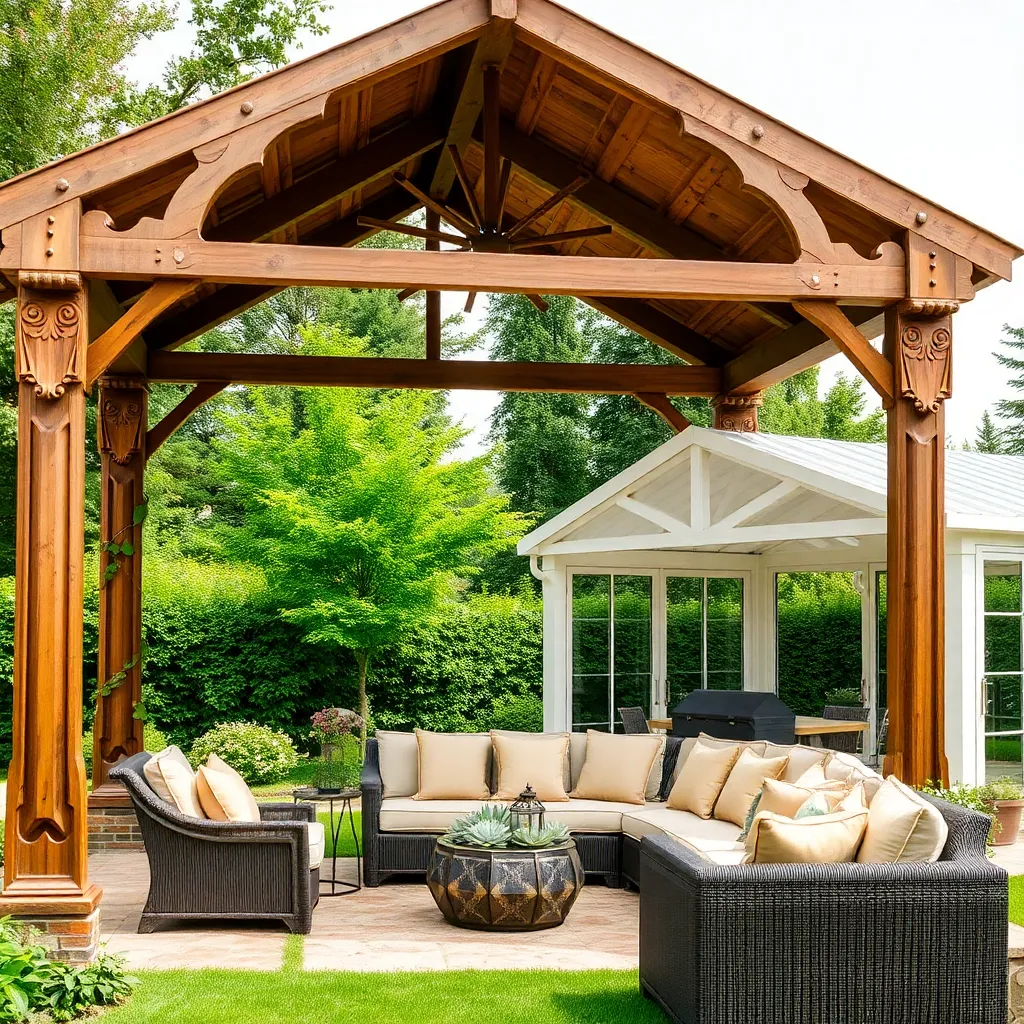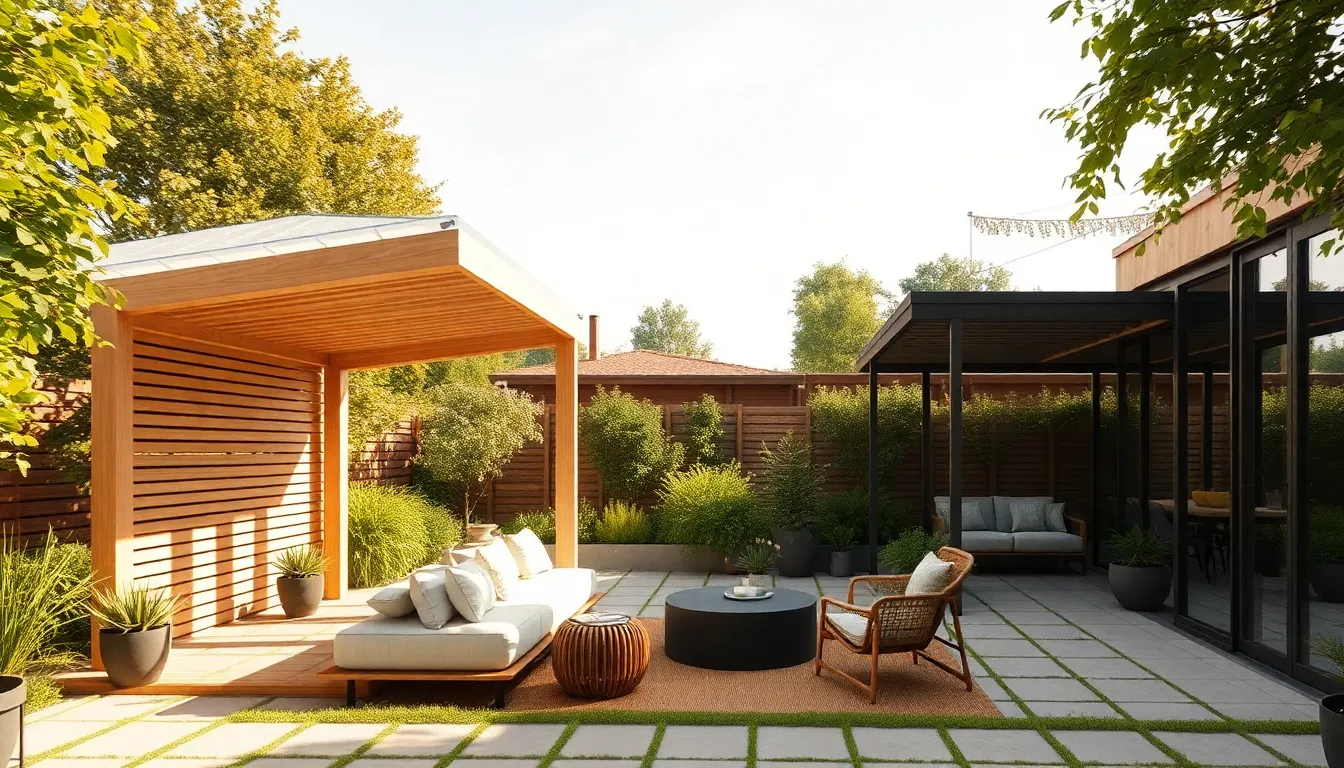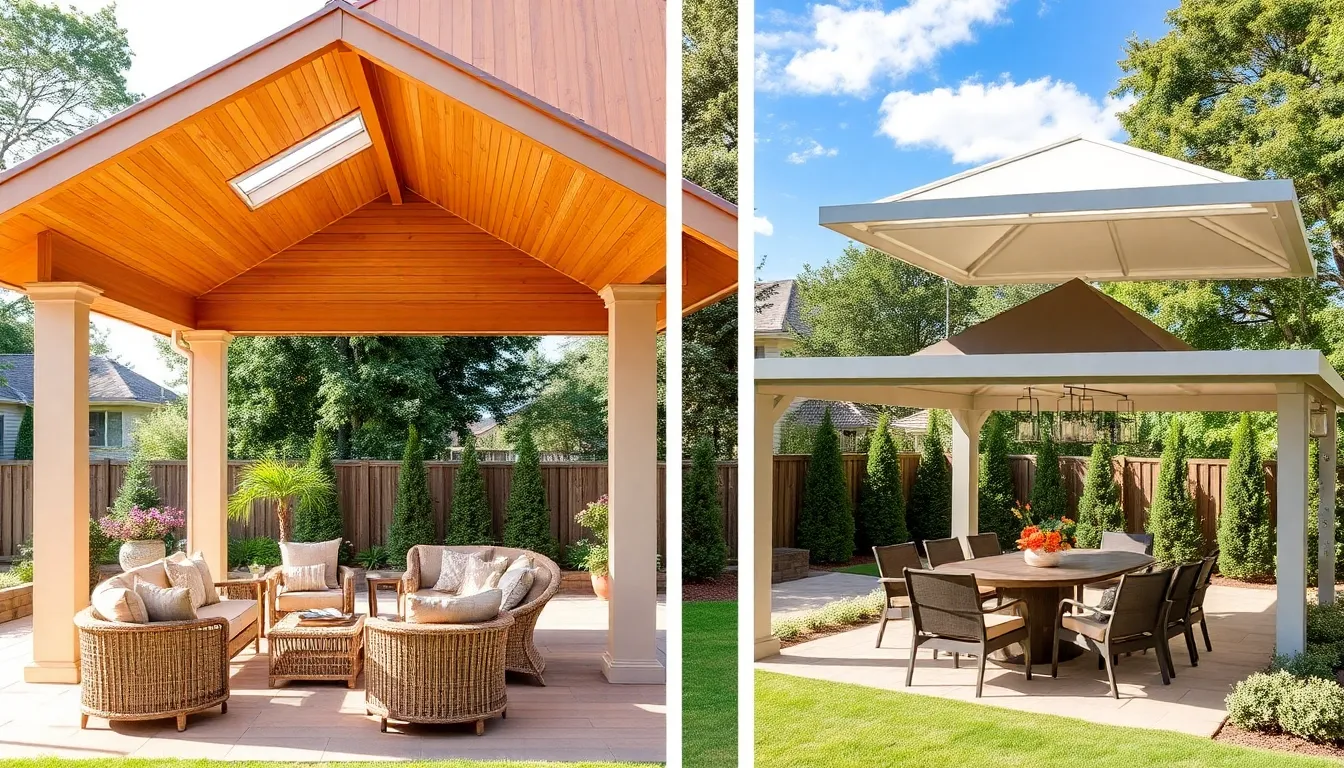Transforming your outdoor space into a serene retreat doesn’t have to be a complex endeavor; with minimalist pavilion concepts, simplicity is your greatest ally. Whether you’re just starting to explore outdoor design or you’re a seasoned homeowner seeking to refine your backyard, embracing minimalism can enhance both aesthetics and functionality. This journey into the world of minimalist pavilions promises to unveil ideas that are not only visually striking but also remarkably practical.
In this article, we’ll guide you through 15 innovative pavilion concepts that balance elegance and utility, offering a fresh perspective on outdoor living. From sleek, modern structures to designs that seamlessly blend with nature, you’ll discover versatile options to suit your personal style and space requirements. Let’s embark on a path to creating an outdoor haven that’s as refreshing as it is inviting, ensuring your living area extends beyond the confines of your indoor walls.
Exploring Minimalist Pavilion Designs
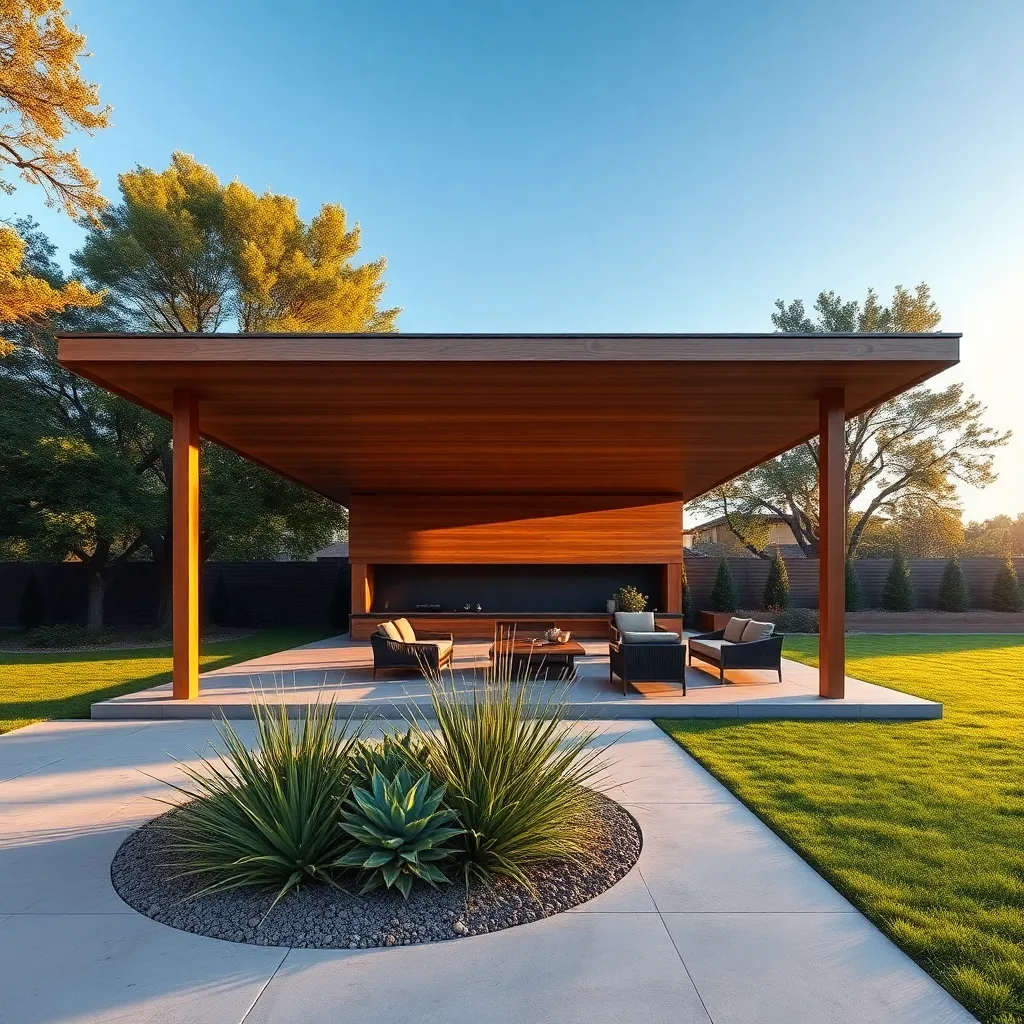
When exploring minimalist pavilion designs, simplicity is the key to creating an inviting outdoor space. Opt for materials like natural wood or metal to achieve a clean and contemporary look. Consider using a basic open-frame structure with a flat or gently sloping roof to provide shade while maintaining an airy feel. Beginners can start with a small pavilion, around 10×10 feet, which offers enough space for a couple of chairs and a table, making it ideal for intimate gatherings.
For a more advanced project, incorporate elements like integrated lighting or adjustable louvered panels to control sunlight and privacy. Ensure the use of weather-resistant finishes to protect the structure from the elements, especially if you live in a region with harsh weather conditions. Advanced DIY enthusiasts might consider adding a green roof, which not only enhances the aesthetic appeal but also improves insulation and helps manage stormwater. Remember, a minimalist pavilion should blend seamlessly with your garden, enhancing the natural beauty of your outdoor space.
Embracing Open-Air Architectural Styles
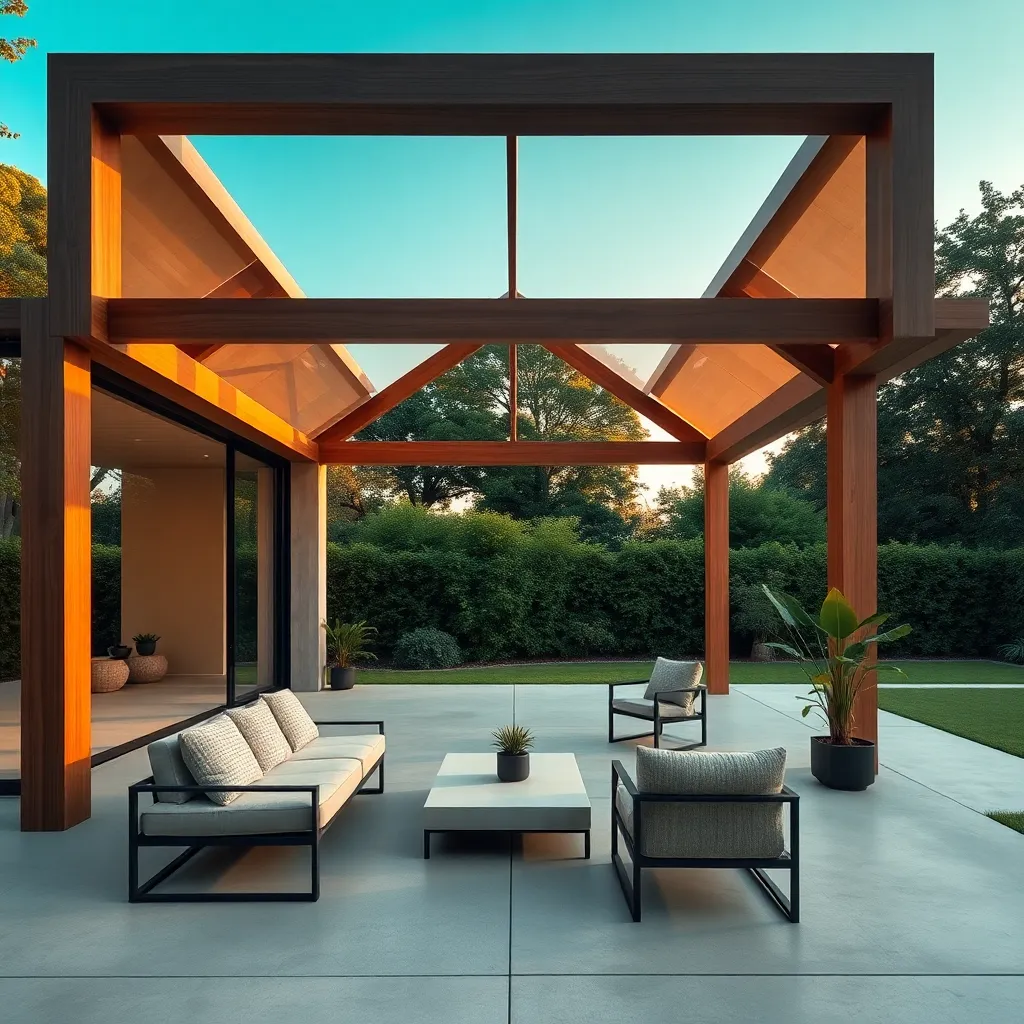
Open-air architectural styles offer a seamless blend of nature and design, allowing you to enjoy the outdoors while maintaining a minimalist aesthetic. For a basic setup, consider using natural wood or bamboo for a warm, organic feel. These materials are not only sustainable but also weather-resistant when properly treated. Beginners can start with a simple design using straight, clean lines and open spaces to maintain the minimalist theme, ensuring a balance between simplicity and functionality.
For those seeking a more advanced approach, incorporating elements like floating roofs or cantilevered structures can add a touch of sophistication to your pavilion. Opt for materials such as corrosion-resistant steel or tempered glass to create a modern look while ensuring durability. Consider integrating features like adjustable louvered panels to control sunlight and enhance comfort. With these elements, your outdoor space will not only be a retreat but also a conversation piece.
Utilizing Natural Light Effectively
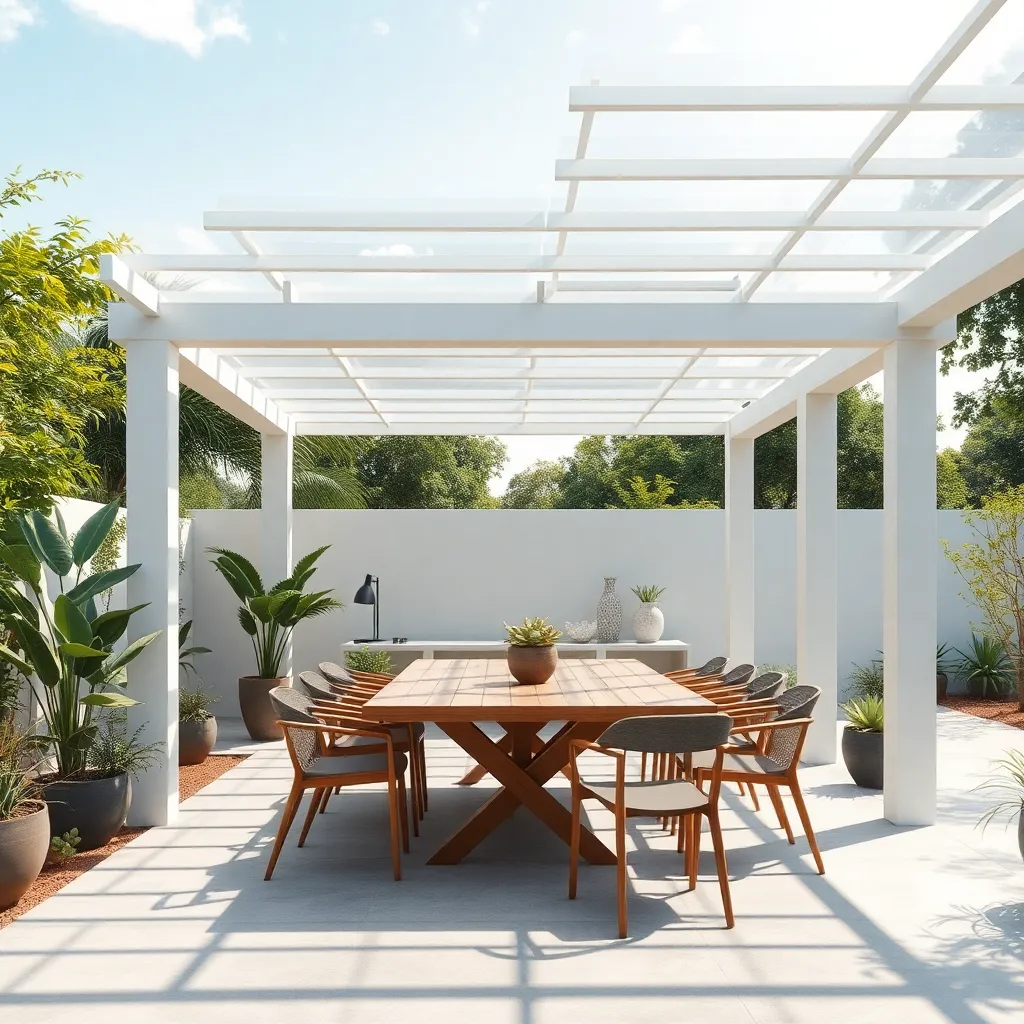
To effectively utilize natural light in your minimalist pavilion, consider the orientation of your structure. Positioning the pavilion to face south or southeast can maximize sunlight exposure throughout the day, which is especially beneficial in cooler climates. Incorporating translucent materials, like polycarbonate panels or frosted glass, allows for diffused light that reduces harsh glare while maintaining privacy. These materials are not only practical but also add a modern touch to your design.
For a more advanced approach, consider integrating adjustable louvers or pergola-style slats on the roof. This feature allows you to control the amount of light entering the pavilion, providing flexibility based on the time of day or season.
- Use materials such as weather-resistant aluminum or sustainably sourced timber for durability and aesthetic appeal.
- Consider installing solar-powered lights to enhance evening ambiance, making the space functional even after sunset.
By thoughtfully designing your pavilion with these elements, you create a welcoming and energy-efficient outdoor retreat.
Incorporating Eco-Friendly Construction Methods

To build an eco-friendly pavilion, consider using sustainable materials like bamboo or reclaimed wood. These materials not only have a lower environmental impact but also add a natural aesthetic to your space. When designing your structure, aim for simplicity and functionality; a minimalist approach often requires fewer resources, reducing waste. Beginners might start with a basic 10×10 foot design, which provides ample space while being manageable in terms of material use.
Advanced builders can enhance sustainability by incorporating passive solar design principles to optimize energy efficiency. Position your pavilion to take advantage of natural shade and breezes, minimizing the need for artificial cooling. For roofing, consider green roofs or solar panels, which can further reduce your environmental footprint and provide additional benefits. By integrating these methods, you’ll create a beautiful, functional space that respects and preserves the natural environment.
Choosing Simplistic Structural Materials
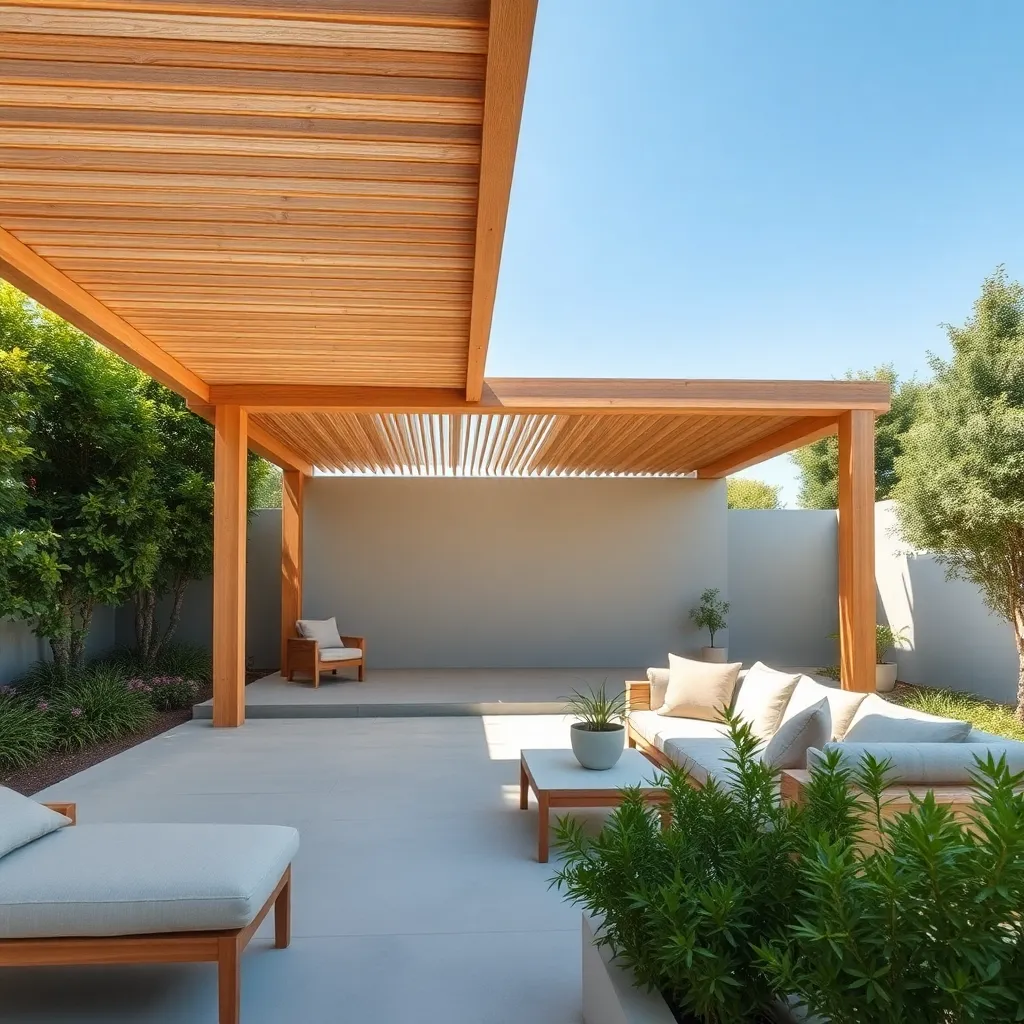
When selecting materials for a minimalist pavilion, simplicity is key. Consider using lightweight, durable options such as aluminum or galvanized steel, which offer sleek lines and low maintenance. For a natural touch, opt for sustainably sourced wood like cedar or bamboo, which can add warmth without overwhelming the design. Keep the structure open to enhance the minimalist aesthetic, focusing on clean lines and functionality.
Incorporate design elements that maximize the utility of your shelter while maintaining simplicity. Modular components are a great choice for easy assembly and customization. Prioritize a design that emphasizes open space, perhaps using transparent roofing materials like polycarbonate to allow natural light to flow through, creating an airy environment. Beginners should start with basic rectangular layouts, while more advanced builders might explore geometric shapes to add interest without complicating the design.
Maximizing Space Through Minimalism
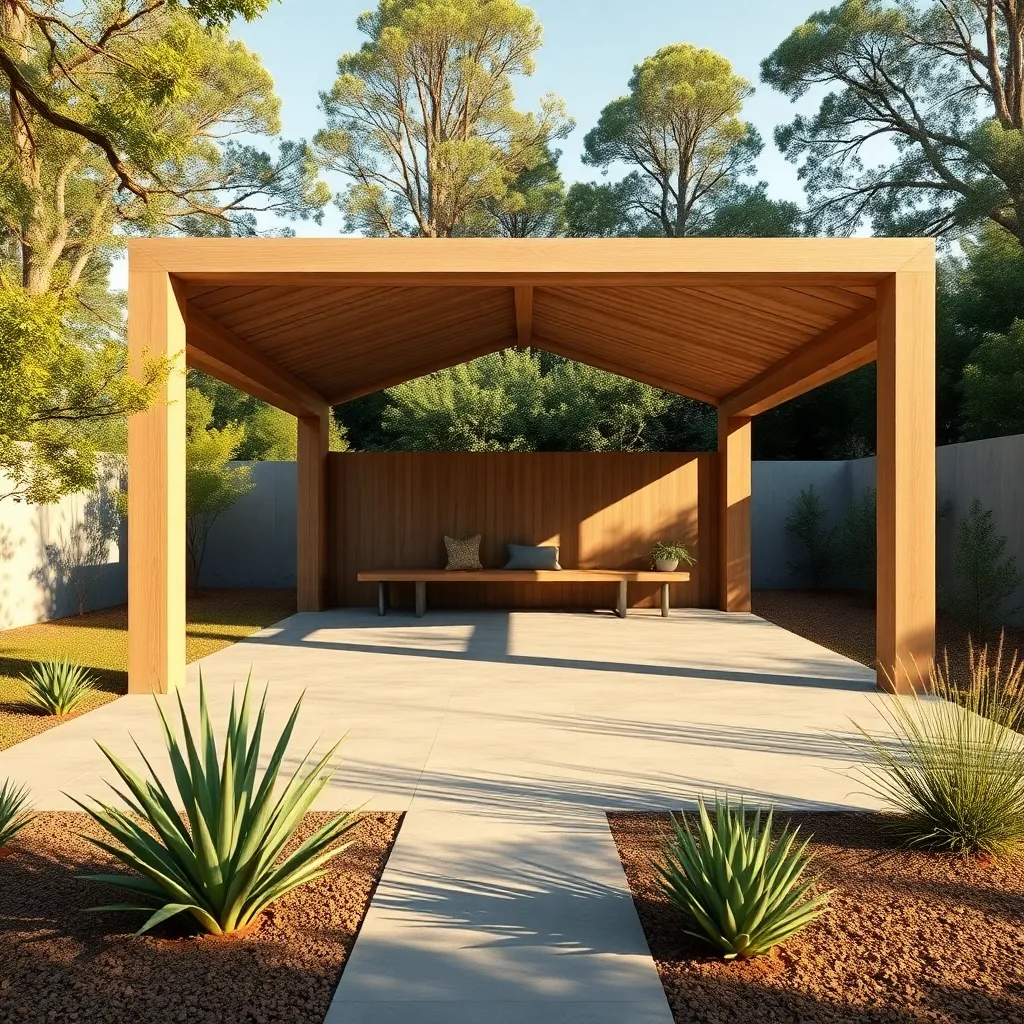
Maximizing space through minimalism involves embracing multi-functional design elements. Consider using **modular furniture**, such as benches with hidden storage or tables that can be folded away when not in use. This approach ensures your pavilion remains clutter-free while providing all necessary amenities. Opt for **lightweight materials** like aluminum or bamboo, which are easy to rearrange and complement a minimalist aesthetic.
Another effective strategy is to focus on vertical space. By incorporating **shelves or vertical garden walls**, you can introduce greenery without sacrificing floor space. These elements not only enhance the visual appeal but also offer practical storage solutions for gardening tools or decorative elements. For a more advanced touch, consider integrating **retractable awnings** to provide adjustable shade and weather protection, maximizing comfort without adding bulk.
Integrating Pavilions Into Landscapes
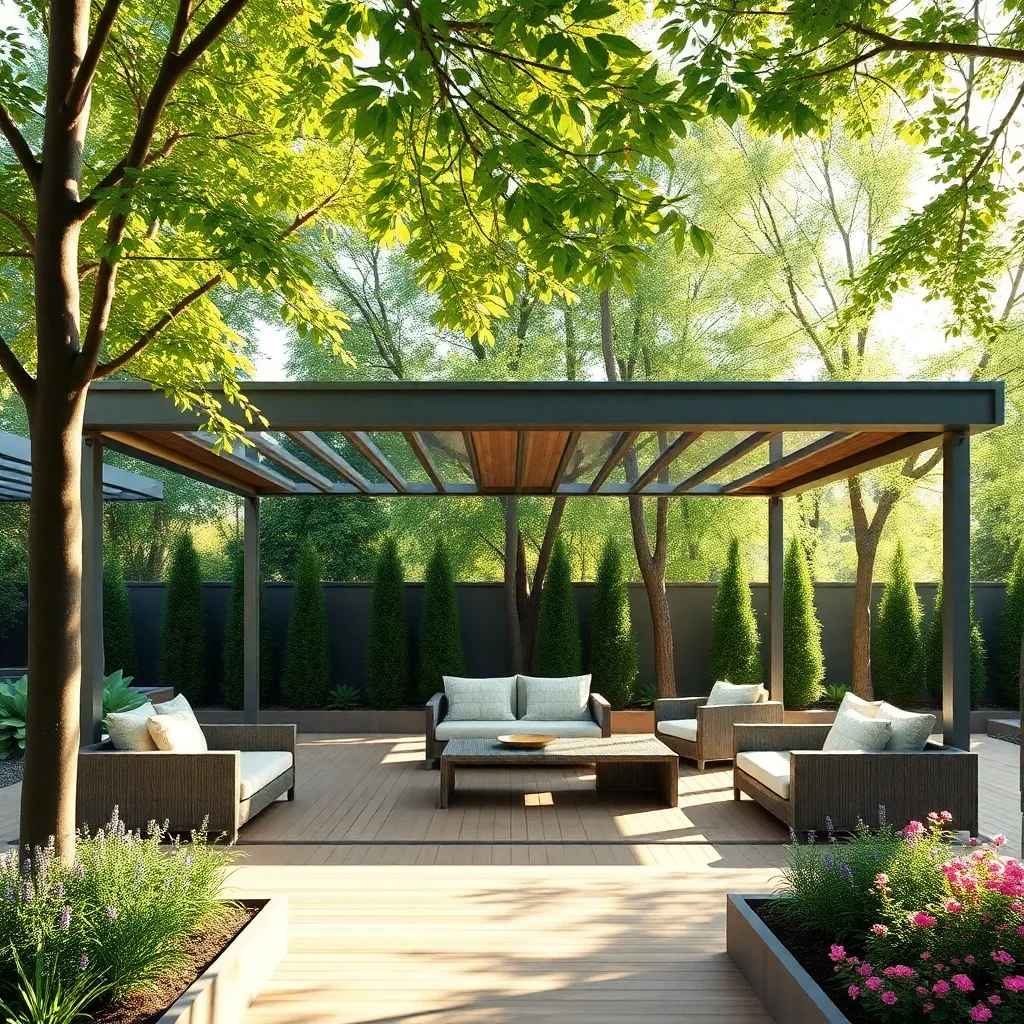
Blending a pavilion seamlessly into your landscape starts with selecting the right materials and design elements that complement your outdoor environment. Consider using natural materials such as cedar or teak, which not only offer durability but also blend well with greenery. For the minimalist touch, opt for simple, clean lines and neutral colors that enhance rather than overpower your garden. Positioning the pavilion strategically, like near a garden path or water feature, can also create a cohesive flow in your outdoor space.
For homeowners who are ready to take on more advanced projects, incorporating custom features such as built-in seating or a small fireplace can transform your pavilion into a multifunctional retreat. Ensure the structure is stable and weather-resistant by using galvanized steel or treated wood for the frame.
- Start with a basic layout plan that considers the pavilion’s size in relation to your yard, typically allowing for at least 10×10 feet for comfortable seating.
- Consult with a landscape architect to integrate the pavilion into existing garden designs.
By focusing on these elements, you’ll create a space that is not only visually appealing but also highly functional.
Prioritizing Function Over Ornamentation
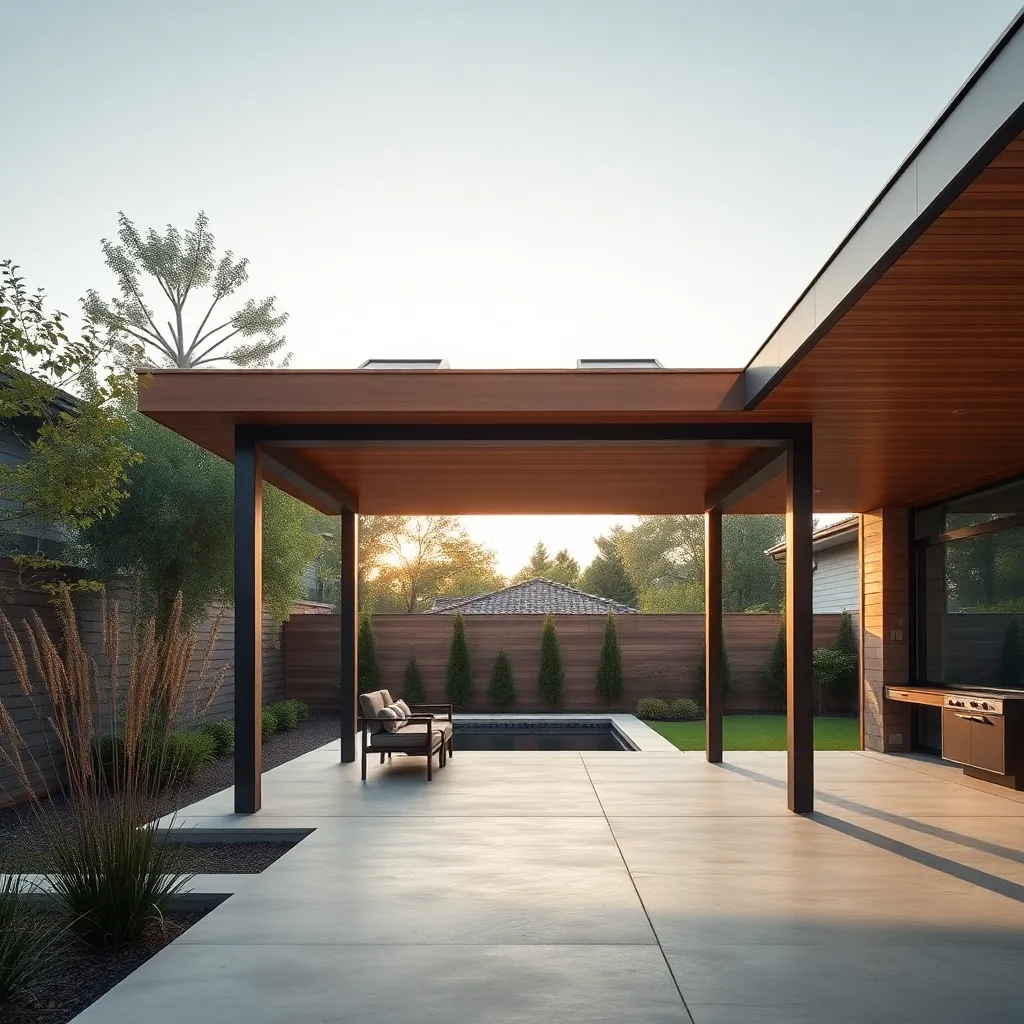
When creating a minimalist pavilion, it’s crucial to focus on functionality over ornamentation. Start by selecting durable materials like weather-resistant wood or metal, ensuring your structure stands the test of time. Opt for a simple, open design that maximizes ventilation and natural light, reducing the need for artificial lighting and promoting energy efficiency. For beginners, a straightforward rectangular shape with a flat or slightly pitched roof can be both economical and easy to construct.
Consider incorporating multi-functional elements to enhance practicality. For example, installing built-in seating or storage can save space and maintain the pavilion’s clean lines. Advanced builders might experiment with modular designs, allowing sections to be added or removed as needed. Keep the pavilion’s footprint modest, ideally under 200 square feet, to blend seamlessly into your landscape without overwhelming it. By emphasizing utility, you create a pavilion that’s as useful as it is aesthetically pleasing.
Adapting Pavilions for Varied Climates
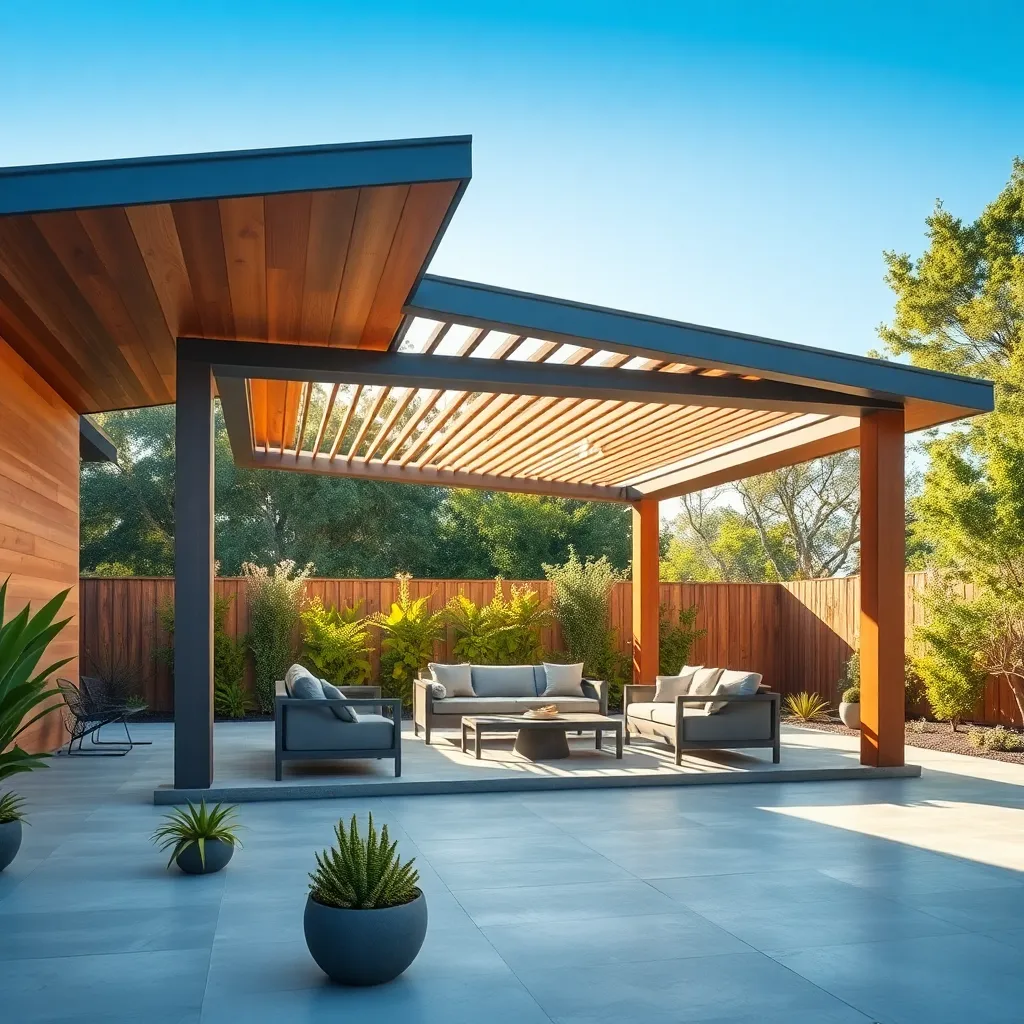
When adapting pavilions for varied climates, it’s crucial to consider the local weather conditions in your design. In hot and sunny regions, opt for materials that reflect heat, such as light-colored woods or composite materials with UV protection. Incorporate adjustable louvers or retractable awnings to provide flexibility in shading throughout the day. For beginners, starting with a simple design that includes a basic pergola structure can be effective, while more experienced builders might explore integrating solar panels for energy efficiency.
Conversely, in areas prone to rain or snow, using durable materials like treated timber or weather-resistant metals is essential to withstand moisture. Ensure your pavilion has a sloped roof to effectively manage water runoff, preventing leaks and damage. Adding windbreaks or side panels can provide additional protection against harsh winds, making the pavilion usable year-round. Consider incorporating drainage features or rain chains to direct water away from your structure, a detail that can enhance both function and aesthetics for those looking to elevate their design.
Innovative Roof Designs for Pavilions
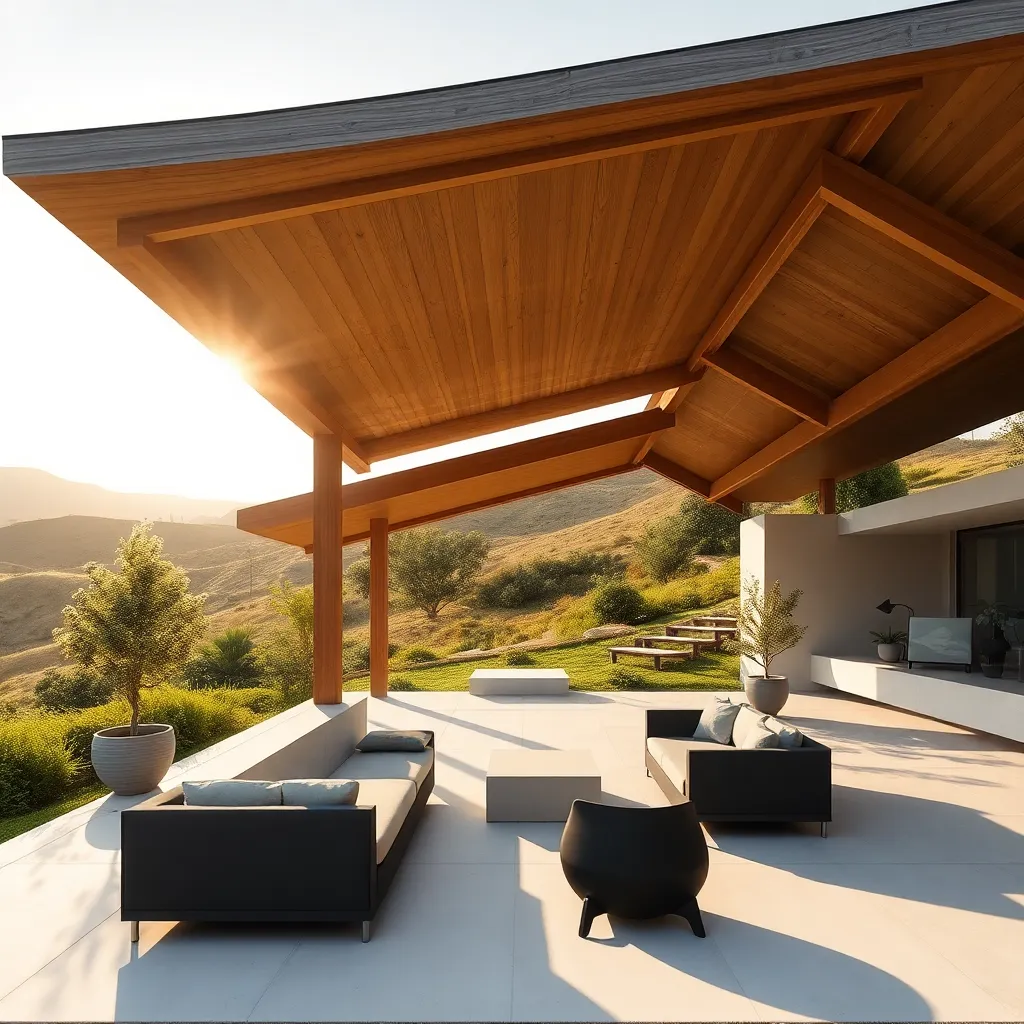
Innovative roof designs can transform a simple pavilion into an architectural masterpiece while maximizing functionality. Consider using cantilevered roofs to create a sleek, modern look that also provides extended shade without additional supports. For a minimalist aesthetic, opt for a flat or gently sloped roof using durable materials like steel or treated wood, ensuring longevity and minimal maintenance. Beginners can start with a simple pergola-style roof using readily available timber and adjustable panels to control sunlight and ventilation.
Advanced builders might explore green roofs, which not only offer an eco-friendly option but also naturally regulate temperature and improve air quality around the pavilion. Incorporating polycarbonate panels is another advanced technique that allows for natural light while protecting from UV rays and rain. Ensure your design includes proper drainage systems to prevent water accumulation and structural issues. By choosing the right design and materials, homeowners can create a pavilion that is both stunning and resilient, offering a perfect outdoor retreat.
Harmonizing with Surrounding Environments
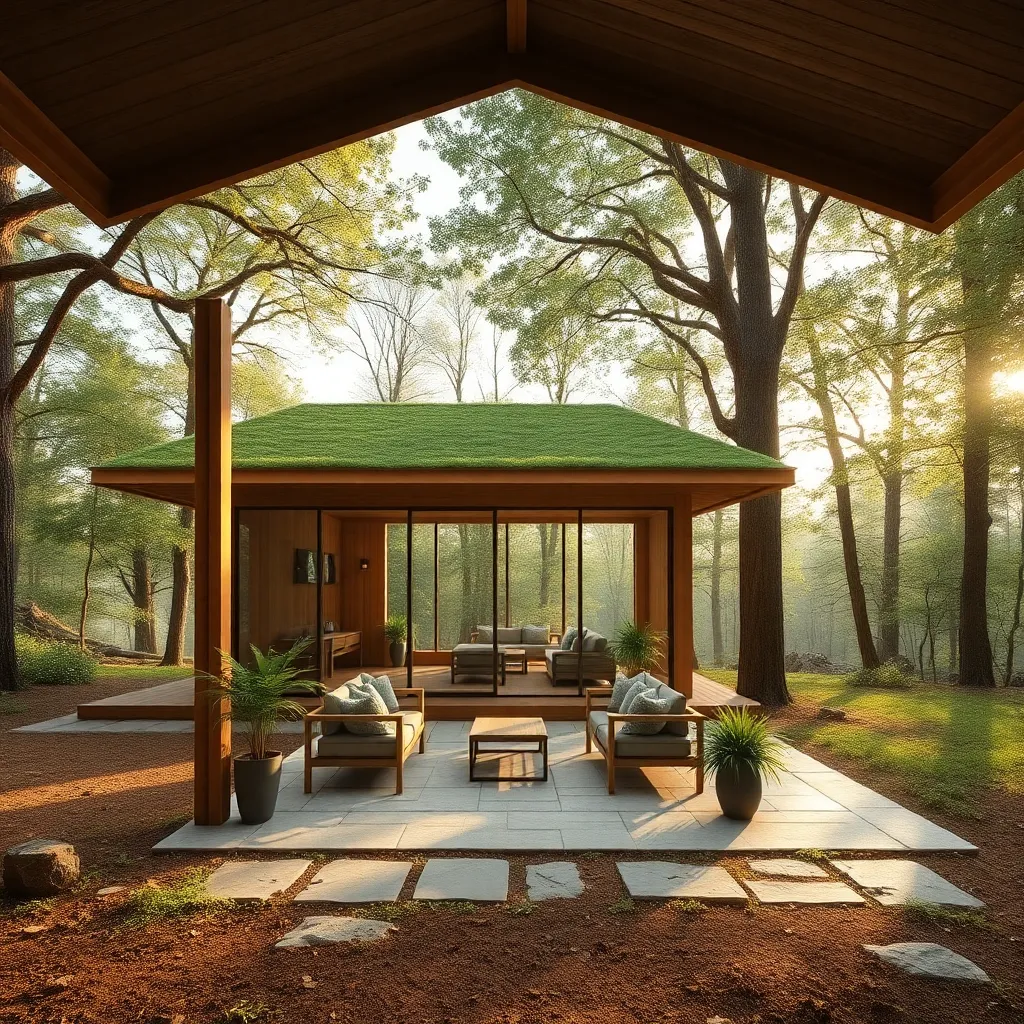
When designing a minimalist pavilion, it’s crucial to ensure it harmonizes with the surrounding environment. Consider using natural materials such as wood and stone that age gracefully and blend seamlessly with the landscape. For a basic start, choose untreated cedar or bamboo, which not only provide aesthetic appeal but also offer durability and resistance to weather conditions. Advanced builders might explore corten steel for a rustic, weathered look that complements natural settings while requiring minimal maintenance.
Thoughtful placement and design can significantly enhance the pavilion’s integration into its environment. Position the structure to take advantage of natural light, and ensure its dimensions are proportionate to the surrounding area—typically, a pavilion should be around 10% of the available outdoor space. Beginners should focus on simple geometric shapes that mirror the natural landscape, while experienced designers can incorporate features like green roofs to further blend the pavilion with its surroundings. Using these techniques not only enhances aesthetic appeal but also creates a serene, inviting outdoor space.
Streamlining Pavilion Construction Techniques
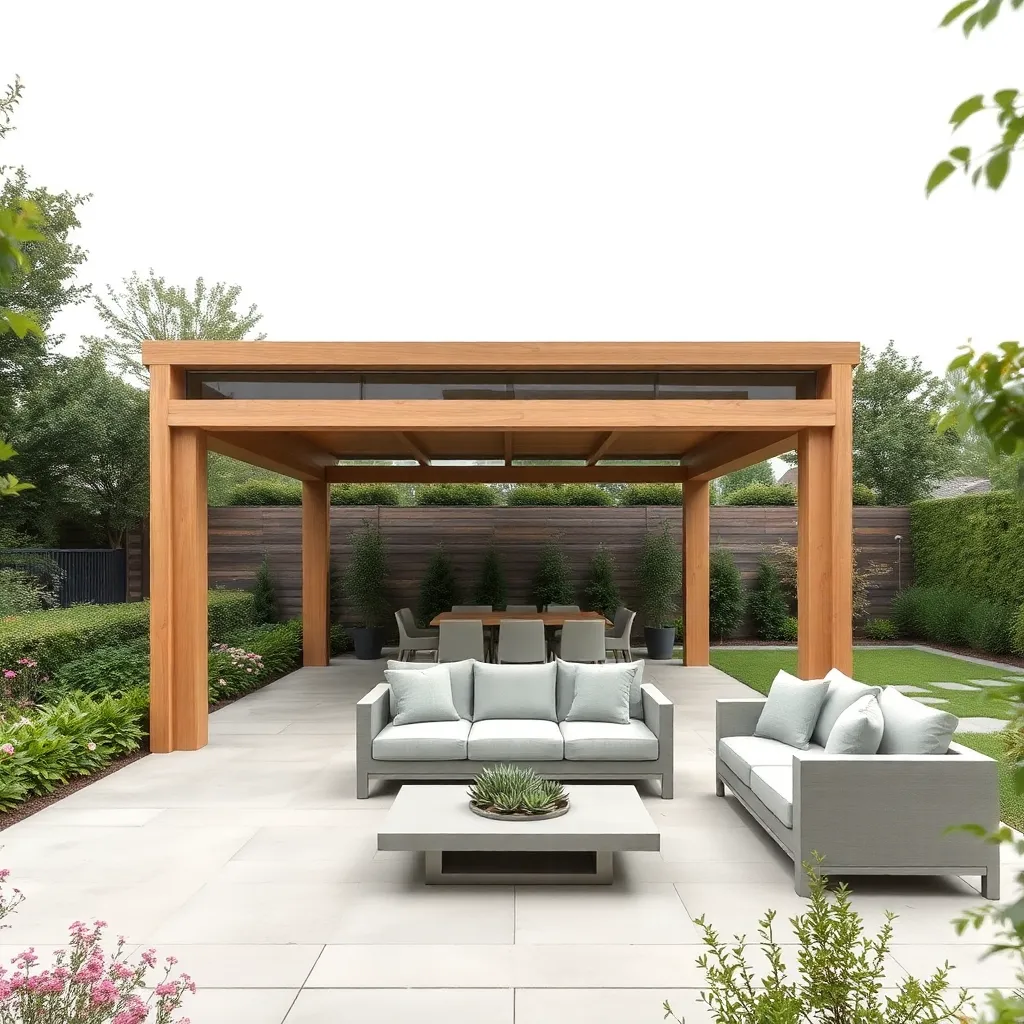
To streamline pavilion construction, start by selecting the right materials that balance durability and aesthetics. Opt for weather-resistant options like cedar or pressure-treated pine for wooden structures, or consider metal frames with powder-coated finishes for a modern, minimalist look. For beginners, using prefabricated kits can significantly simplify the process, ensuring precise cuts and easy assembly. Anchoring the pavilion securely is crucial; use concrete footings for stability, especially in areas prone to high winds.
For those with more experience, integrating advanced techniques such as modular designs can enhance flexibility and efficiency. This approach allows for customizable layouts and easier future modifications. Consider incorporating sustainable elements like solar panels on the roof or rainwater collection systems to make your pavilion eco-friendly. Pay attention to dimensions—common sizes range from 10×10 to 12×16 feet—to accommodate various uses while maintaining a minimalist footprint. With these strategies, creating a stylish and functional outdoor shelter becomes an achievable project for any homeowner.
Creating Versatile Outdoor Spaces

Transforming your outdoor space into a versatile haven requires thoughtful design and the right materials. Start by selecting a sturdy frame, such as steel or aluminum, for durability and low maintenance. Consider using weather-resistant fabrics for the roof and walls to protect against elements while maintaining a minimalist aesthetic. Beginners should focus on simple, modular designs that allow for easy assembly and future modifications.
For those seeking advanced options, incorporate adjustable features like retractable awnings or sliding panels to control light and privacy. A minimalist palette of neutral colors and natural materials, such as wood or stone, can seamlessly blend the pavilion into your garden. To extend usability, add features like built-in lighting or heating elements for year-round comfort. With these adaptable design choices, your outdoor space becomes a functional extension of your home.
Sustainable Practices in Pavilion Design
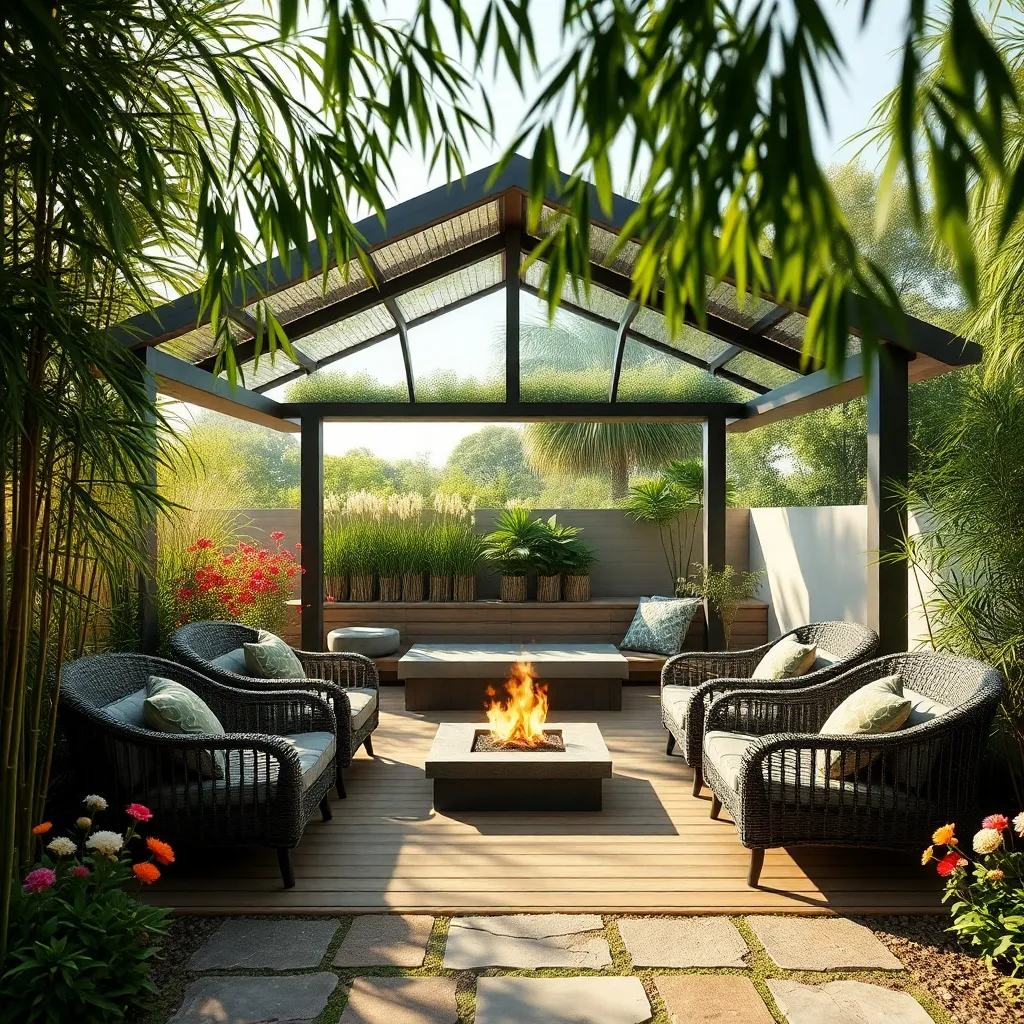
Embracing sustainable practices in pavilion design not only benefits the environment but also enhances the longevity and aesthetic appeal of your outdoor space. Start by selecting sustainable materials such as FSC-certified wood or recycled steel, which reduce environmental impact while offering durability. For a beginner-friendly option, consider using bamboo, known for its rapid growth and renewability, to create a lightweight yet sturdy structure.
Incorporating passive design elements is key to creating an eco-friendly pavilion. Position your pavilion to maximize natural light and airflow, reducing the need for artificial lighting and cooling. For those seeking advanced tips, integrate a green roof or solar panels to further reduce carbon footprint and energy costs. Additionally, using water-based, low-VOC finishes will minimize harmful emissions, ensuring a healthier environment for you and your family.
Future Trends in Minimalist Pavilions

As homeowners increasingly lean towards minimalist pavilions, future trends are focusing on integrating technology and nature harmoniously. A key design element is the use of lightweight, weather-resistant materials such as aluminum and treated wood, which provide durability while maintaining clean lines. Incorporating smart lighting and climate controls can enhance both functionality and comfort, allowing for a seamless blend between outdoor spaces and modern living.
For those looking to embrace minimalist aesthetics, consider open-plan designs with retractable walls that offer flexibility and maximize space. Beginners should start with simple structures, using materials like bamboo or recycled steel for a sustainable approach. Experienced builders can experiment with modular construction techniques, allowing for easy customization and expansion. These elements not only cater to personal style but also adapt to diverse climates and landscapes, making them a versatile choice for any homeowner.
Conclusion: Creating Beautiful Outdoor Spaces
In exploring the ’15 Minimalist Pavilion Concepts’, we’ve delved into essential relationship pillars: from valuing simplicity and genuine connection to embracing open spaces for communication and emotional vulnerability. We emphasized the importance of nurturing a shared vision and maintaining balance, much like the carefully designed structures that inspire calm and contemplation. Each concept reinforces that less can indeed be more, fostering a deeper, more meaningful bond.
As a practical next step, choose one concept that resonates most with your current relationship dynamic and dedicate this week to implementing it. Whether it’s simplifying your communication or creating a shared space for reflection, small changes can lead to profound transformations.
Don’t let these valuable insights slip away! Bookmark this article as a handy guide for when you need a reminder or a fresh perspective. Remember, relationships flourish with intention and care, much like the minimalist pavilions we admire. Embrace these principles, and look forward to a future where your relationships not only endure but thrive with authenticity and grace. Take control of your relationship journey today, and watch as it unfolds into something beautifully simple and enduring.


